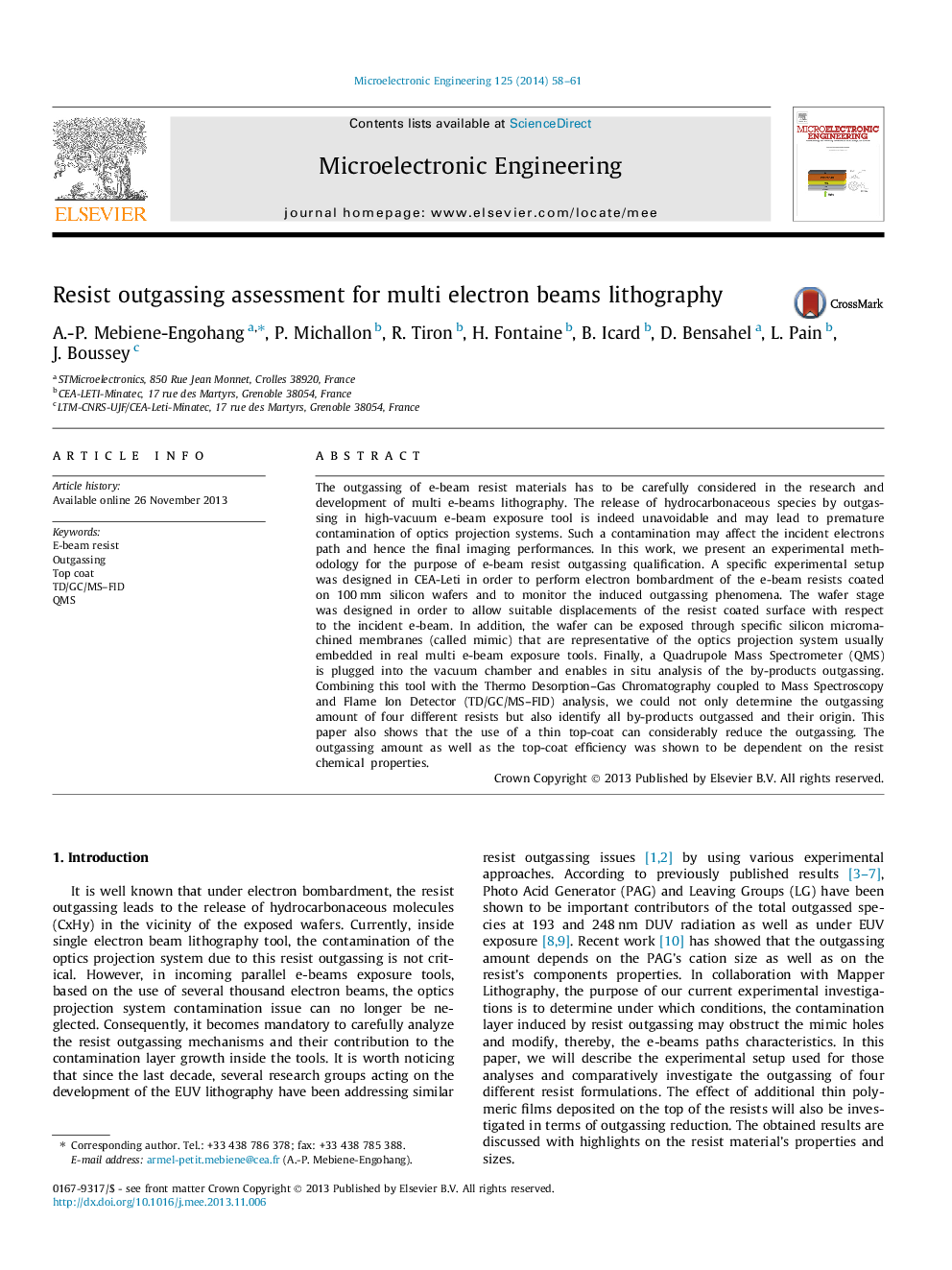| Article ID | Journal | Published Year | Pages | File Type |
|---|---|---|---|---|
| 542528 | Microelectronic Engineering | 2014 | 4 Pages |
•We built an experimental setup that allows the exposure of resists through mimics.•We investigated the outgassing of 4 resist formulations and effect of 1 top coat.•QMS and TD–GC–MS methods were used to assess and characterize resist outgassing.•Resist outgassing amount depends of resist type and formulations.•The top-coat efficiency was shown to be dependent on the resist chemical properties.
The outgassing of e-beam resist materials has to be carefully considered in the research and development of multi e-beams lithography. The release of hydrocarbonaceous species by outgassing in high-vacuum e-beam exposure tool is indeed unavoidable and may lead to premature contamination of optics projection systems. Such a contamination may affect the incident electrons path and hence the final imaging performances. In this work, we present an experimental methodology for the purpose of e-beam resist outgassing qualification. A specific experimental setup was designed in CEA-Leti in order to perform electron bombardment of the e-beam resists coated on 100 mm silicon wafers and to monitor the induced outgassing phenomena. The wafer stage was designed in order to allow suitable displacements of the resist coated surface with respect to the incident e-beam. In addition, the wafer can be exposed through specific silicon micromachined membranes (called mimic) that are representative of the optics projection system usually embedded in real multi e-beam exposure tools. Finally, a Quadrupole Mass Spectrometer (QMS) is plugged into the vacuum chamber and enables in situ analysis of the by-products outgassing. Combining this tool with the Thermo Desorption–Gas Chromatography coupled to Mass Spectroscopy and Flame Ion Detector (TD/GC/MS–FID) analysis, we could not only determine the outgassing amount of four different resists but also identify all by-products outgassed and their origin. This paper also shows that the use of a thin top-coat can considerably reduce the outgassing. The outgassing amount as well as the top-coat efficiency was shown to be dependent on the resist chemical properties.
Graphical abstractSchematic of the Leti’s 5 keV outgassing test tool.Figure optionsDownload full-size imageDownload as PowerPoint slide
